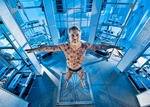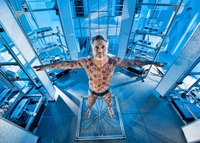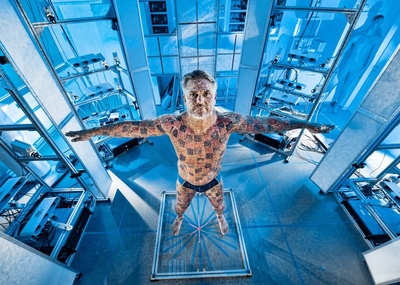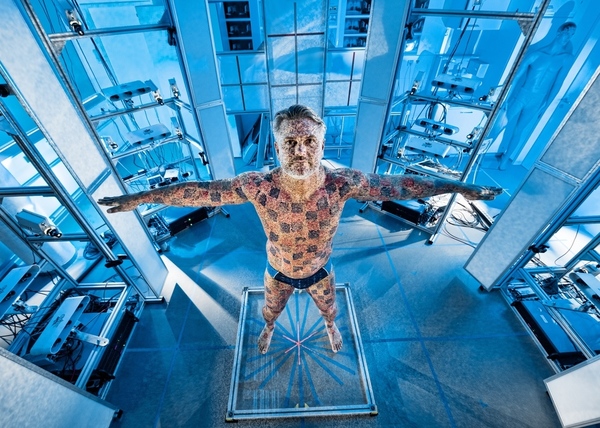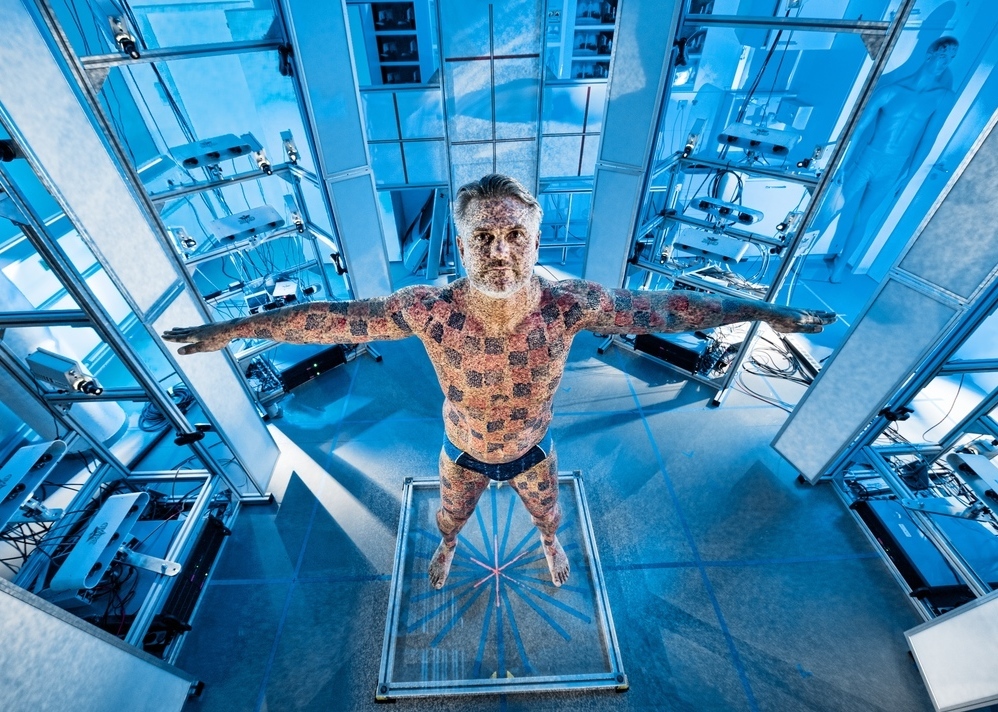4D Body-Scanner / man in blue
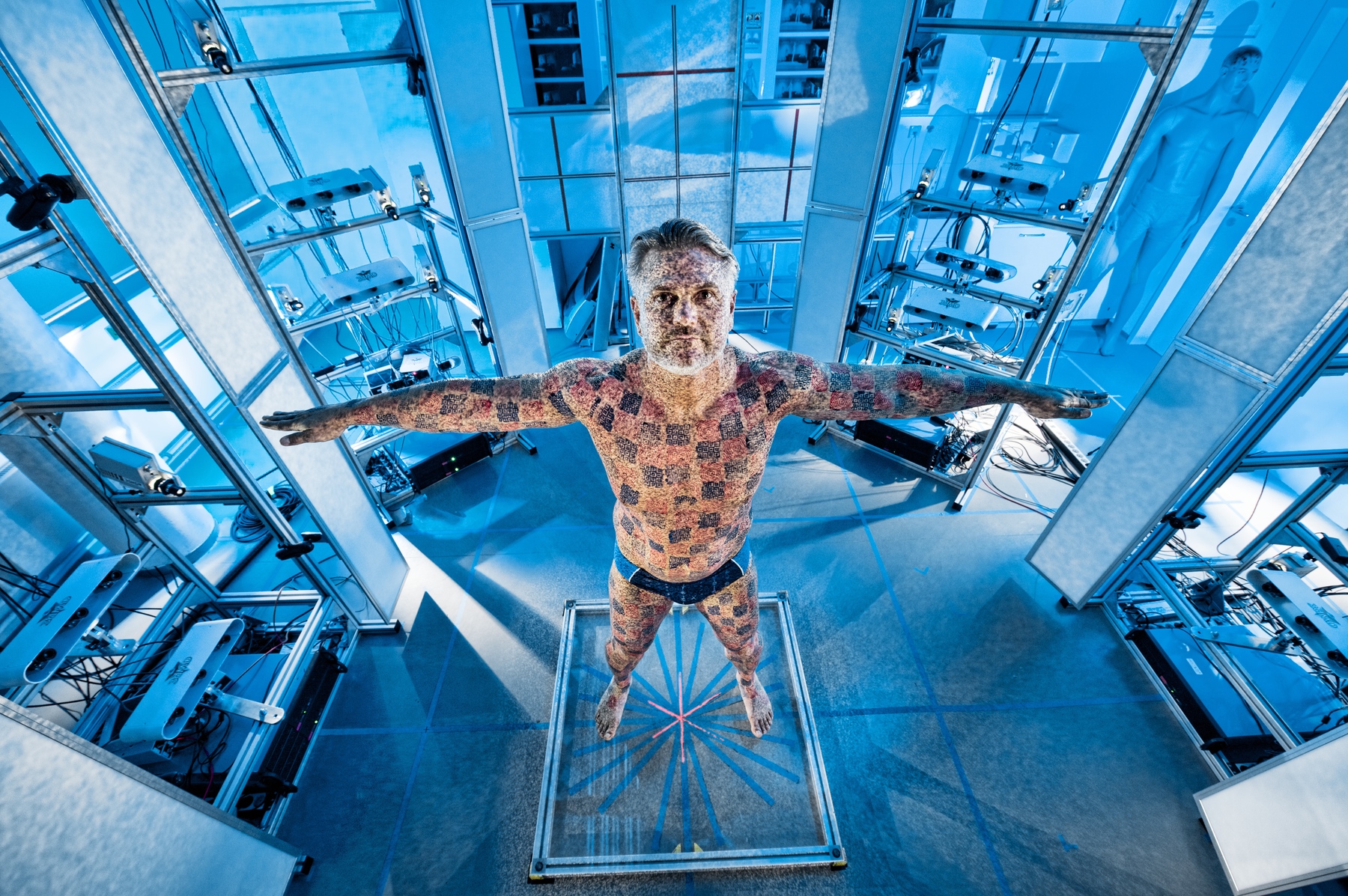
Im 4D-Bodyscanner nehmen 66 Kameras eine Person ins Visier, 22 für Farbbilder, 44 für Schwarz-Weißbilder. Sie sollen jeden Millimeter Haut aufzeichnen, jede noch so kleine Eigenheit. 60 Aufnahmen schießt jede Kamera in der Sekunde. Das macht 3960 Bilder pro Sekunde, 237600 Bilder in der Minute. Die vierte Dimension ist die Zeit. Da werden nicht nur statische, sondern auch dynamische Aufnahmen gemacht. The life of an avatar is dependent on technology, including even the very act of its birth. For the virtual figure to look true to life and move realistically in its computer world, its creators need to have detailed information about the body of the real-life model, as well as about its movement. This is precisely the data that the first four-dimensional full-body scanner provides. This device was developed by Michael J. Black, Director at the Max Planck Institute for Intelligent Systems in Tübingen, together with American company 3dMD. With 22 stereo cameras and 22 color cameras taking 60 images per second, the scanner captures a person in various positions and activities that Javier Romero, a scientist at the institute, demonstrates here. For the scan, red and blue squares are printed on Nick Schill, a professional model, and then illuminated with a quickly pulsating spot pattern. The two patterns help the researchers reconstruct the three-dimensional surface of the body and the skin naturally. Not only can this method be used to create true-to-life figures for computer games and films, but it also offers interesting perspectives for research in psychology and medicine. In this way, it will soon be possible to use the realistic avatars in conducting perception experiments on body aware- ness – for instance to prevent eating disorders.
Ⓒ MPI-IS/W. Scheible

